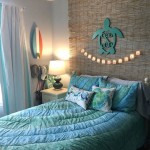How To Decorate Around Brown Leather Furniture
Brown leather furniture is a classic and versatile foundation for any living space. It offers a sense of warmth, sophistication, and durability that can withstand the test of time. However, decorating around brown leather can sometimes present a design challenge. The key is to understand the inherent qualities of the material and color and utilize them to create a cohesive and visually appealing environment. This article offers guidance on how to successfully decorate around brown leather furniture, ensuring a stylish and functional result.
Understanding the Characteristics of Brown Leather
Before embarking on any decorating project, it is crucial to appreciate the key qualities of the furniture itself. Brown leather, in its various shades from light tan to deep chocolate, possesses several defining characteristics. Its inherent warmth provides a grounding effect to a room, contributing to a sense of comfort and relaxation. Leather also has a rich texture that adds visual interest, reflecting light in a unique way and adding a touch of luxury. Furthermore, leather furniture often has a substantial presence, demanding to be a focal point in the room. Understanding these characteristics assists in the selection of complementary colors, textures, and styles to create a balanced and inviting space.
Selecting a Color Palette
Color selection is arguably the most critical aspect of decorating around brown leather. The goal is to create a harmonious and visually pleasing balance. A well-chosen color palette will complement and enhance the furniture rather than clashing with it. Consider the shade of brown leather when making color choices. Darker brown leather can handle bolder colors, while lighter shades benefit from softer, more neutral hues. Key strategies for developing a suitable color palette include using analogous colors, complementary colors, or neutral tones.
Analogous colors, which are colors that sit next to each other on the color wheel (such as various shades of brown, beige, and cream), can create a soothing and unified look. Think of incorporating warm neutrals, subtle greens, or even hints of gold to create a comfortable and inviting atmosphere. Complementary colors, those opposite each other on the color wheel, can offer a more dynamic and contrasting effect. For example, a deep chocolate leather sofa can be beautifully offset by teal or blue-green accent walls or accessories. Neutral tones, like whites, grays, and blacks, represent a safe yet elegant route. These colors provide a clean and sophisticated backdrop, allowing the brown leather to take center stage while adding pops of color through artwork, pillows, and throws.
Incorporating Texture and Pattern
Leather's inherent texture should be balanced with other textures and patterns within the room to prevent visual monotony. Various textures can add depth, visual interest, and tactile appeal. Fabrics such as linen, velvet, cotton, and wool can be incorporated through throw pillows, blankets, curtains, and upholstery on other furniture pieces. Consider incorporating natural materials like wood, stone, and metal to complement the leather. For example, a wooden coffee table, a stone fireplace, or metal accents in lamps or decorative objects can add visual weight and dimension.
Patterns are also crucial in breaking up the visual field. A patterned rug can anchor the room and add a layer of complexity, while patterned throw pillows or curtains can introduce color and interest. Avoid patterns that compete with the leather. Instead, opt for designs with contrasting color palettes or complementary tones to create balance. Consider patterns which add to the style of the room. For example, a contemporary setting may incorporate geometric patterns, while a more traditional space might feature floral or damask prints.
Selecting Accent Pieces and Accessories
Accent pieces and accessories play a vital role in completing the look of a room with brown leather furniture. These items offer opportunities to introduce pops of color, add personality, and create visual cohesiveness. Consider the various design elements when choosing accessories. Artwork should complement the color palette and style of the room, while lamps and lighting fixtures can enhance the overall ambience. Choose items that complement each other and create a sense of unity with the leather furniture.
Rugs can define the seating area and add warmth and texture. A rug placed under the coffee table and in front of the sofa provides a grounding element and helps tie the space together. Throw pillows and blankets are essential for adding color, texture, and comfort. Varying the sizes, shapes, and patterns of throw pillows can create an inviting and stylish look. Consider using metal or ceramic decorative objects on shelves and tables. These objects will provide visual interest and reflect light, adding dimension to the space. Plant life, such as indoor plants, can add a natural element to the room and enhance the overall feel of the space.
Considering the Style of the Room
The style of the furniture and the overall design of the room should be considered. Brown leather furniture works in a variety of design aesthetics, from traditional to modern. Coordinating to a selected style ensures that the chosen elements complement each other and create a cohesive aesthetic. A modern setting could feature clean lines, minimalist furniture, and a neutral color palette with pops of bright color. In this case, the brown leather can act as a grounding element.
A more traditional space might embrace rich, warm colors, ornate details, and classic patterns. In this instance, the brown leather can seamlessly integrate with other traditional elements, enhancing the overall sense of sophistication and comfort. A rustic or bohemian style might embrace natural materials, textures, and patterns with the brown leather furniture blending seamlessly with the overall aesthetic. The key is to maintain consistency with the chosen style to create a harmonious and purposeful space.
Arranging the Furniture and Creating a Focal Point
Furniture arrangement determines the flow and functionality of the space. Think about how the room is going to be used and arrange the furniture to facilitate conversation, viewing of a television, or other activities. The brown leather furniture often serves as the anchor of the space. Consider the positioning of the sofa, chairs, and other pieces in relation to the focal point, such as a fireplace or window. Ensure adequate space for circulation and movement to avoid overcrowding the space. Consider the importance of having a good visual balance in the room. A well-placed mirror can reflect light and make the space feel larger.

Decorating Around A Leather Sofa Centsational Style

How To Visually Lighten Up Dark Leather Furniture Couches Living Room Brown Couch

Decorating With Leather Furniture 3 Tips You Ve Gotta Know Nell Hill S
:strip_icc()/leather-sofa-living-room-ideas-2-proem-studio-white-oak-bbcb9cff21384c118adb7d407a843ebc.jpeg?strip=all)
23 Living Rooms With Leather Sofas That Look Incredible

Decorating Around A Leather Sofa Centsational Style

Decorating With Brown Leather Norwood Furniture

What Goes With Leather Furniture

20 Best Dark Brown Leather Sofa Decorating Ideas And Designs 2025 Decor Couch Living Room

Decorating With Leather Furniture 3 Tips You Ve Gotta Know Nell Hill S

How To Decorate With Leather Furniture Arighi Bianchi







